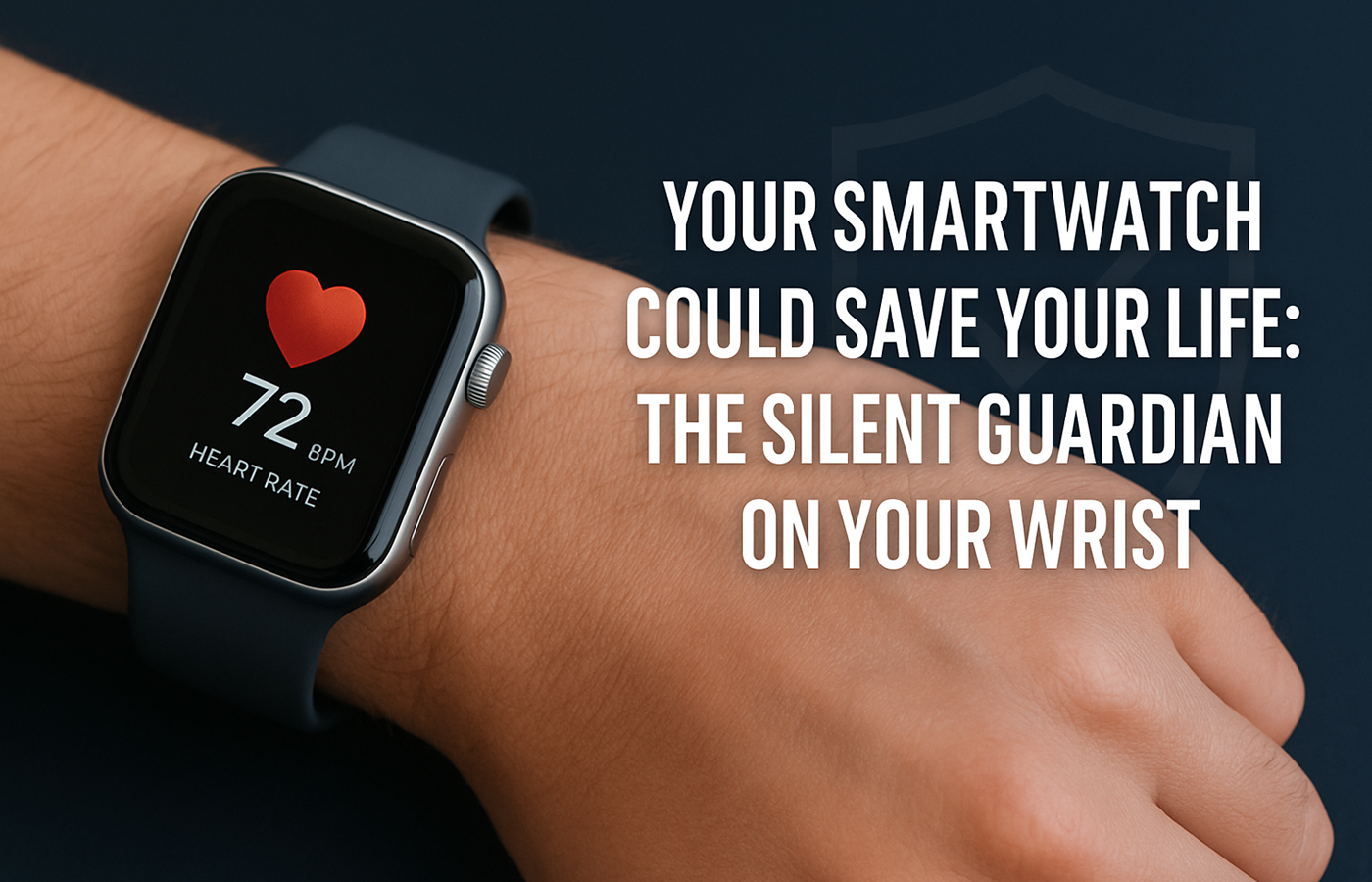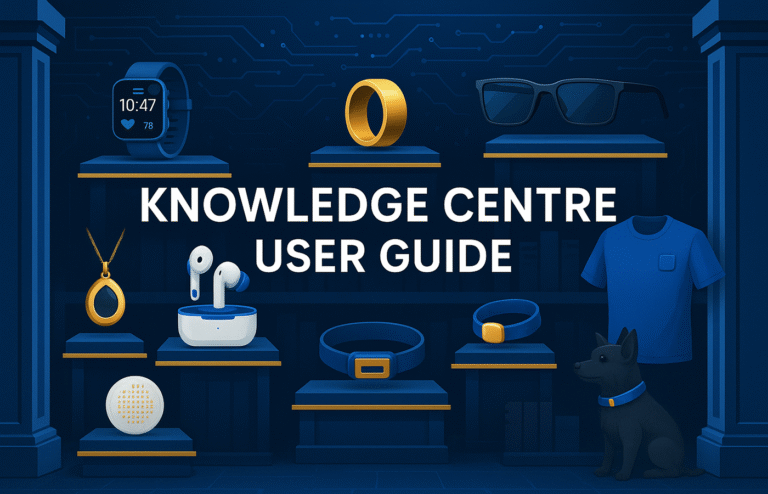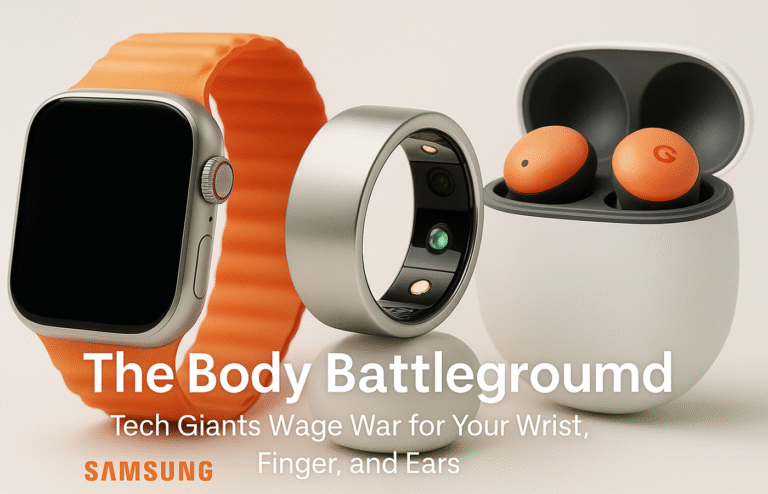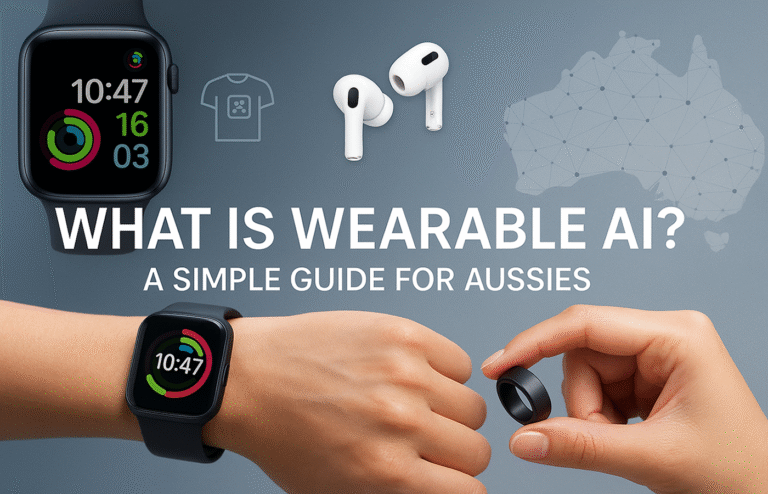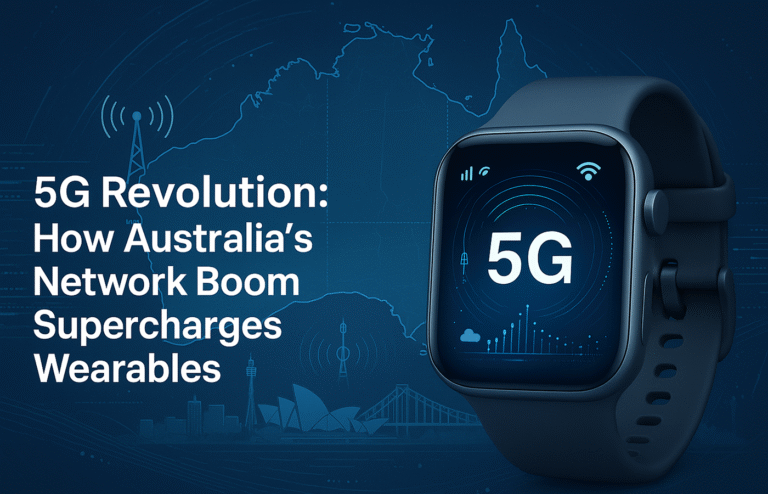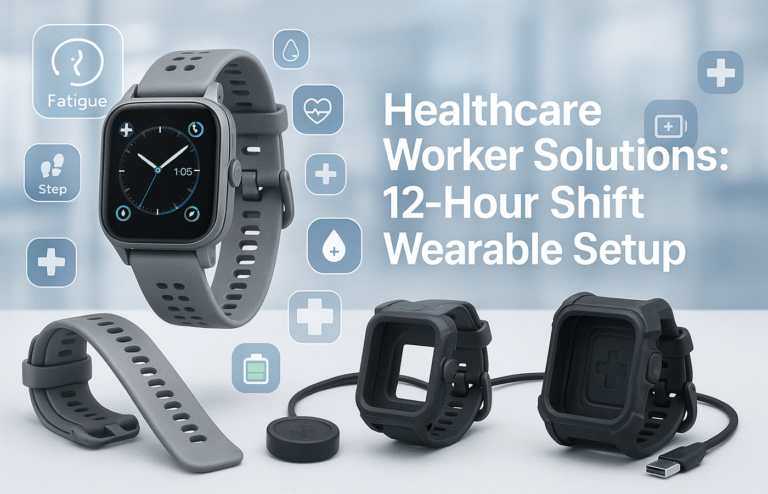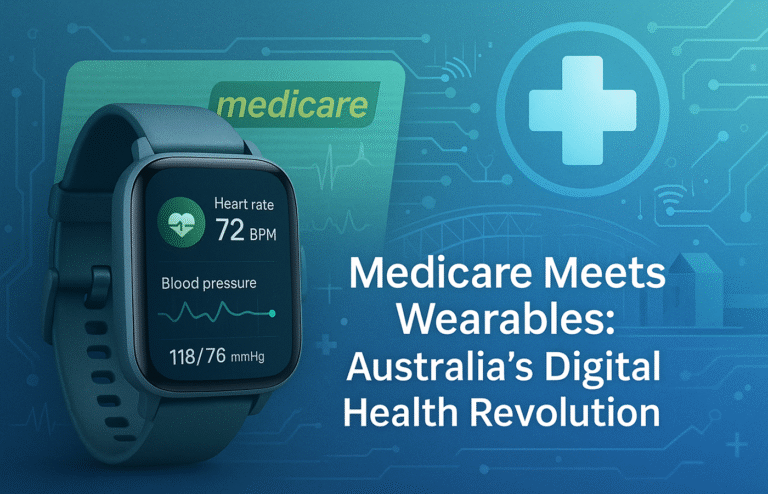Your Smartwatch Could Save Your Life: The Silent Guardian on Your Wrist
Modern smartwatches have evolved beyond fitness tracking to become sophisticated 24/7 health monitoring systems detecting serious medical conditions before symptoms appear.
Life-Saving Detection:
● Heart rhythm monitoring detecting atrial fibrillation affecting 460,000 Australians
● Sleep apnoea detection using accelerometer data identifying condition affecting 25% of men
● Fall detection automatically calling emergency services with GPS location
Device Capabilities:
● Apple Watch Series 10 ($649 RRP) offers ECG readings and sleep apnoea detection
● Samsung Galaxy Watch7 ($479 RRP) provides heart monitoring and rhythm alerts
● Continuous stress management and blood oxygen monitoring
Australian Cases:
Documented examples include Perth AFib detection preventing stroke, Sydney sleep apnoea diagnosis, and Melbourne hiking emergency rescue.
Future:
Blood pressure monitoring and glucose estimation expanding accessibility.
Your Smartwatch Could Save Your Life: The Silent Guardian on Your Wrist
Imagine this: you’re going about your normal day when suddenly your watch buzzes with an urgent notification. “Irregular heart rhythm detected,” it says. “Consider seeking medical attention.” You feel fine, but you decide to visit your doctor anyway. The result? Your smartwatch has just caught a potentially life-threatening heart condition weeks before you would have noticed any symptoms.
This isn’t science fiction – it’s happening right now across Australia and around the world. Modern smartwatches and fitness trackers have evolved far beyond simple step counters. Today’s devices are sophisticated health monitoring systems that can detect serious medical conditions before you even realise something’s wrong.
Your Watch Never Sleeps, Even When You Do
One of the most remarkable capabilities of modern wearable devices is their ability to monitor your health 24/7. Unlike traditional medical check-ups that provide a snapshot of your health at a single moment, these devices continuously track your vital signs and patterns.
Heart Rate Monitoring That Goes Beyond the Gym
The heart rate sensors in devices like the Apple Watch Series 10 (starting at $649 RRP) and Samsung Galaxy Watch7 (starting around $479 RRP) don’t just count beats during your morning jog. They’re constantly analysing your heart rhythm patterns, looking for irregularities that could signal serious conditions.
The Apple Watch’s ECG feature can detect atrial fibrillation (AFib), a common heart rhythm disorder that affects over 460,000 Australians. AFib often has no symptoms but significantly increases stroke risk. When caught early, it’s highly treatable. The watch takes an electrocardiogram reading in just 30 seconds, providing data that would typically require a visit to your GP or cardiologist.
Similarly, Samsung’s Galaxy Watch7 includes advanced heart monitoring capabilities that can detect irregular rhythms and alert you to seek medical advice. These aren’t medical devices in the strictest sense, but they’re sophisticated early warning systems that complement professional healthcare.
Sleep Apnoea: The Silent Condition Affecting One in Four Australians
Sleep apnoea is one of Australia’s most underdiagnosed health conditions, affecting approximately 25% of men and 10% of women. This condition causes breathing to repeatedly stop and start during sleep, leading to poor sleep quality and increased risk of heart disease, stroke, and diabetes.
The challenge with sleep apnoea is that most people don’t know they have it. Partners might notice snoring or breathing interruptions, but many sufferers live alone or their symptoms go unnoticed.
Enter the latest generation of smartwatches. The Apple Watch Series 10 now includes sleep apnoea detection, using its accelerometer to monitor breathing disturbances throughout the night. After tracking your sleep patterns for 30 days, the device can identify consistent patterns that suggest sleep apnoea and recommend you discuss the findings with your doctor.
This feature represents a significant breakthrough in preventive healthcare. Instead of waiting years for symptoms to become severe enough to warrant a sleep study, people can now identify potential issues early and seek appropriate treatment.
Falls: When Every Second Counts
For many Australians, particularly those over 65, falls represent a serious health risk. According to the Australian Institute of Health and Welfare, falls are the leading cause of injury-related hospitalisation among older Australians, with someone aged 65 or older hospitalised every 36 minutes due to a fall.
Modern smartwatches include sophisticated fall detection systems that use multiple sensors – accelerometer, gyroscope, and heart rate monitor – to distinguish between normal movements and potentially serious falls. When a hard fall is detected, the watch can automatically call emergency services and send your location to emergency contacts if you don’t respond within a set timeframe.
This feature has already saved countless lives worldwide. There are numerous documented cases of people being found and treated after falls in remote locations, elderly individuals receiving rapid assistance when living alone, and even younger users getting help after accidents during sports or outdoor activities.
Real-World Heroes: Stories from Australia
Margaret’s Story: Perth, WA Margaret, a 67-year-old retiree, received an Apple Watch from her daughter for Christmas. Three months later, while gardening, she received a heart rate alert. Despite feeling fine, she visited her GP, who discovered she was experiencing atrial fibrillation. Early treatment prevented a potential stroke, and Margaret now manages her condition with medication and regular monitoring.
David’s Experience: Sydney, NSW David, a 45-year-old tradesman, used his Samsung Galaxy Watch to track his fitness routine. When the device consistently showed irregular sleep patterns and his partner mentioned increased snoring, David consulted a sleep specialist. The data from his watch helped fast-track his diagnosis of moderate sleep apnoea. He now uses a CPAP machine and reports feeling more energised than he has in years.
Emma’s Emergency: Melbourne, VIC Emma, a 28-year-old hiker, slipped on wet rocks during a solo trek in the Dandenong Ranges. Her Apple Watch detected the fall and, when she didn’t respond due to being unconscious, automatically called emergency services with her precise location. Search and rescue teams found her within hours, and she made a full recovery from her concussion and broken wrist.
Beyond Heart Health: A Comprehensive Health Picture
Modern wearables monitor numerous health indicators that paint a comprehensive picture of your wellbeing:
Stress Management Devices like the Fitbit Sense and Garmin Venu series include stress tracking features that monitor heart rate variability throughout the day. When stress levels spike, they can prompt guided breathing exercises or suggest taking a break. For busy professionals and parents, this real-time feedback helps manage stress before it becomes overwhelming.
Blood Oxygen Monitoring Many current smartwatches include pulse oximeters that measure blood oxygen levels. While not medical-grade devices, they can identify concerning trends that warrant further investigation. This feature gained particular relevance during the COVID-19 pandemic, as low blood oxygen levels can be an early indicator of complications.
Menstrual and Reproductive Health Advanced cycle tracking features help users monitor reproductive health patterns, predict fertile windows, and identify potential irregularities that might require medical attention. Combined with other health metrics, this data provides valuable insights for family planning and general reproductive health.
The Technology Behind the Magic
Understanding how these devices work helps appreciate their remarkable capabilities. Modern smartwatches incorporate multiple sophisticated sensors:
- Photoplethysmography (PPG) sensors use light to measure blood volume changes in your wrist, enabling heart rate and blood oxygen monitoring
- Electrical heart sensors can perform ECG readings similar to those in medical settings
- Accelerometers and gyroscopes detect movement patterns, falls, and breathing disturbances during sleep
- Temperature sensors monitor skin temperature for various health insights
- Advanced algorithms analyse patterns over time to identify anomalies and trends
This sensor fusion approach provides much more accurate and meaningful data than any single measurement could offer.
Making the Technology Work for You
Choose the Right Device Different smartwatches excel in different areas. Apple Watches lead in heart health features and emergency capabilities, whilst Samsung Galaxy Watches offer excellent all-around health monitoring with strong Android integration. Garmin devices excel in fitness and outdoor activities, whilst Fitbit focuses on accessible health tracking for everyday users.
Understand the Limitations These devices are not medical equipment and cannot replace professional healthcare. However, they’re powerful tools for health awareness and early detection. Always consult healthcare professionals about any concerning readings or trends.
Consistency is Key The real power of health monitoring comes from consistent use over time. Wearing your device regularly allows it to establish your personal baselines and identify meaningful changes in your health patterns.
The Future is Already Here
We’re living through a revolution in personal health monitoring. What once required expensive medical equipment and hospital visits is now available on your wrist for under $500. These devices are becoming more sophisticated each year, with new sensors and capabilities being added regularly.
The Apple Watch Series 10’s sleep apnoea detection is just the beginning. Future updates will likely include blood pressure monitoring, blood glucose estimation, and even more advanced cardiac monitoring capabilities. Samsung and other manufacturers are developing similar features, making comprehensive health monitoring increasingly accessible to everyday Australians.
Taking the First Step
If you’re considering a smartwatch for health monitoring, start by identifying your primary health concerns and research which devices excel in those areas. Consult with your GP about incorporating wearable health data into your healthcare routine – many doctors now welcome this additional information to better understand their patients’ day-to-day health patterns.
Remember, the best health monitoring device is the one you’ll actually wear consistently. Whether it’s a premium Apple Watch or a more affordable Fitbit, the key is finding something that fits your lifestyle and preferences.
Your smartwatch might not be able to prevent every health issue, but it can certainly help you catch problems early when they’re most treatable. In a world where early detection can mean the difference between a minor treatment and a major health crisis, having a vigilant guardian on your wrist isn’t just convenient – it could truly save your life.
The technology to monitor your health around the clock is here, it’s affordable, and it’s getting better every day. The question isn’t whether smartwatches can help with your health – it’s whether you’re ready to let them.

